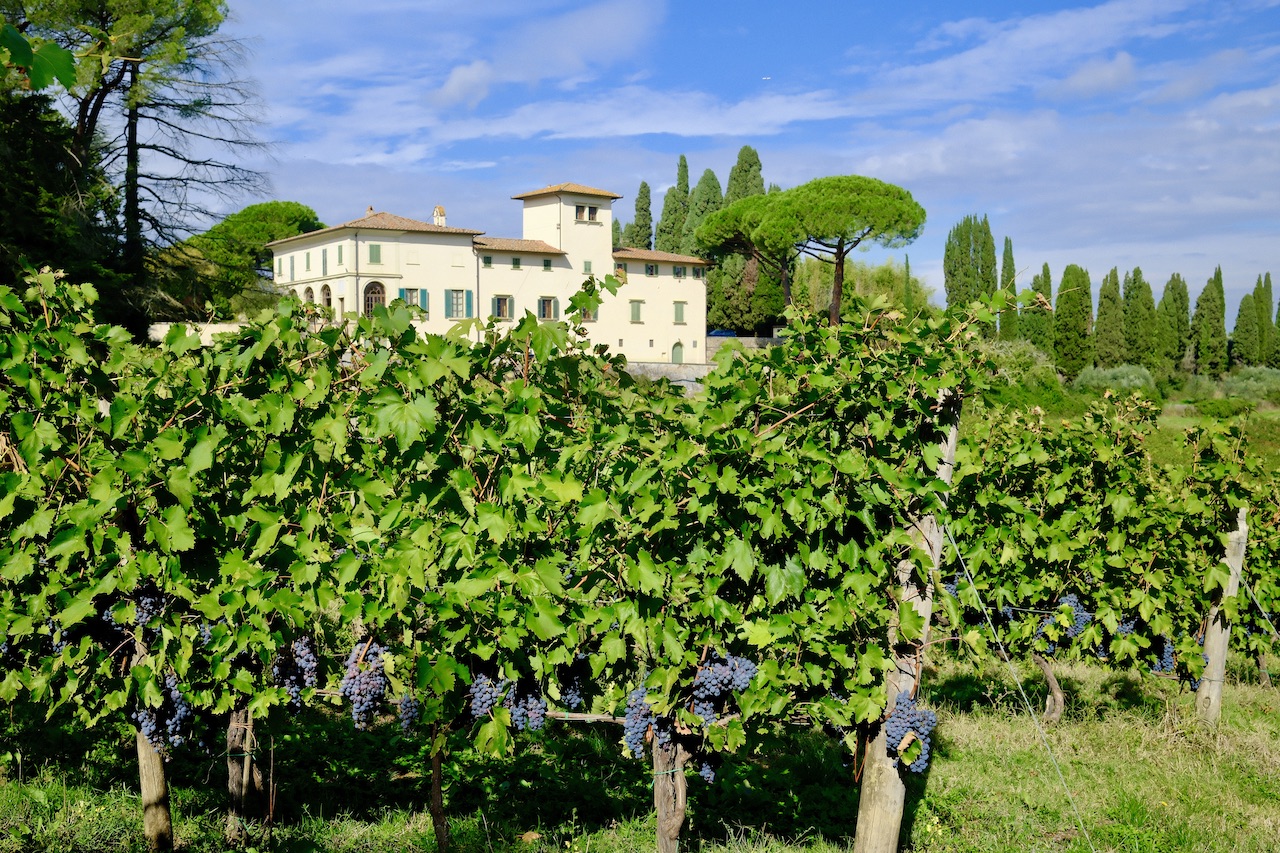Wine tours in Tuscany - About Angie - +39 3333185705 - angie.chianti@gmail.com
The arrival at one of the wineries of our Tuscany wine tours is always fascinating. The countryside is colored like a painter’s palette, the dominant color is bright green, the tall cypress trees mark the private property and outline the landscape with their elegance; also there is a great variety of sounds, people at work and above all a lot of birds singing, giving rise to endless concerts throughout the day, a kind of Mozart with a good dose of Frank Sinatra and a hint of Beyoncé …
Then the long-awaited moment comes: the visit inside the cellar. Here, the show changes dramatically: natural light is dim, the temperature is controlled, often entering you feel a chill, the colors are few and the silence is deep. Yet here the wines become great Italian wines, Chianti Classico, Super Tuscan Wines… thanks to aging that turns the reckless youth contained in the grapes into wines full of … wisdom.
And as it happens for men, wisdom is acquired with time, experience and good teachers. For wine, the great teacher of wisdom is the barrel.
Let’s watch it closely: it is made of oak wood, the bottom and the top are formed from adjacent planks, the side part consists of numerous thick wooden strips named “doghe”; the “doga” is a long strip of wood that is curved in all its length, so as not to weaken the final structure. To hold together the parts of the barrel are used special high quality iron rings, so that you can open the barrel when you need to inspect it.
The wood used for the barrels is particularly valuable because it must be compact and uniform and not have “defects” such as cracks or knots. After being selected, it is cut in various thicknesses according to the demand of the wine house, usually around 60-65 mm; at this point they are put on seasoning, which must be absolutely natural and slow: so the wood both loses its stronger essences thanks to the sun, the wind, the air and the rain holding only those intended to interact with the must, and also achieve the essential structural strength.
The production process of the barrel ends with the application of a natural breathable paint over its entire outer surface to protect it from microorganisms that thrive well in the damp cellars.
And if you’ll visit the wineries in Tuscany noiselessly walking along their long corridors you’ll realize that there is not a perfect silence: the wine resting in the barrels is not sleeping at all! It’s like a schoolboy at school with his best teachers and if you listen you’ll hear whispers.
The aging of wine, in fact, takes place in a continuous exchange between the must and the external environment, that is, with the oxygen that the barrels leave gradually pass inside (first wisdom rule: everything little by little) and between the must and the interior of the barrels, that is, the exchange that takes place between the wood that gives its natural substances and the grapes (second wisdom rule: only the contact between souls generates change).
In the period in which the wine remains at school in the barrels it changes color, going from black to ruby and garnet color, thus changing its flavor that gains more naturally fragrances, especially spices and fruits; there the wine may rest 1 or 2 years to achieve the wonderful bouquet of Chianti Classico and Chianti Classico Riserva, and up to 5-6 years for the Brunello di Montalcino or the Super Tuscan Wine
A wisdom of being and living that can also become yours if you can taste their scents and flavors.





